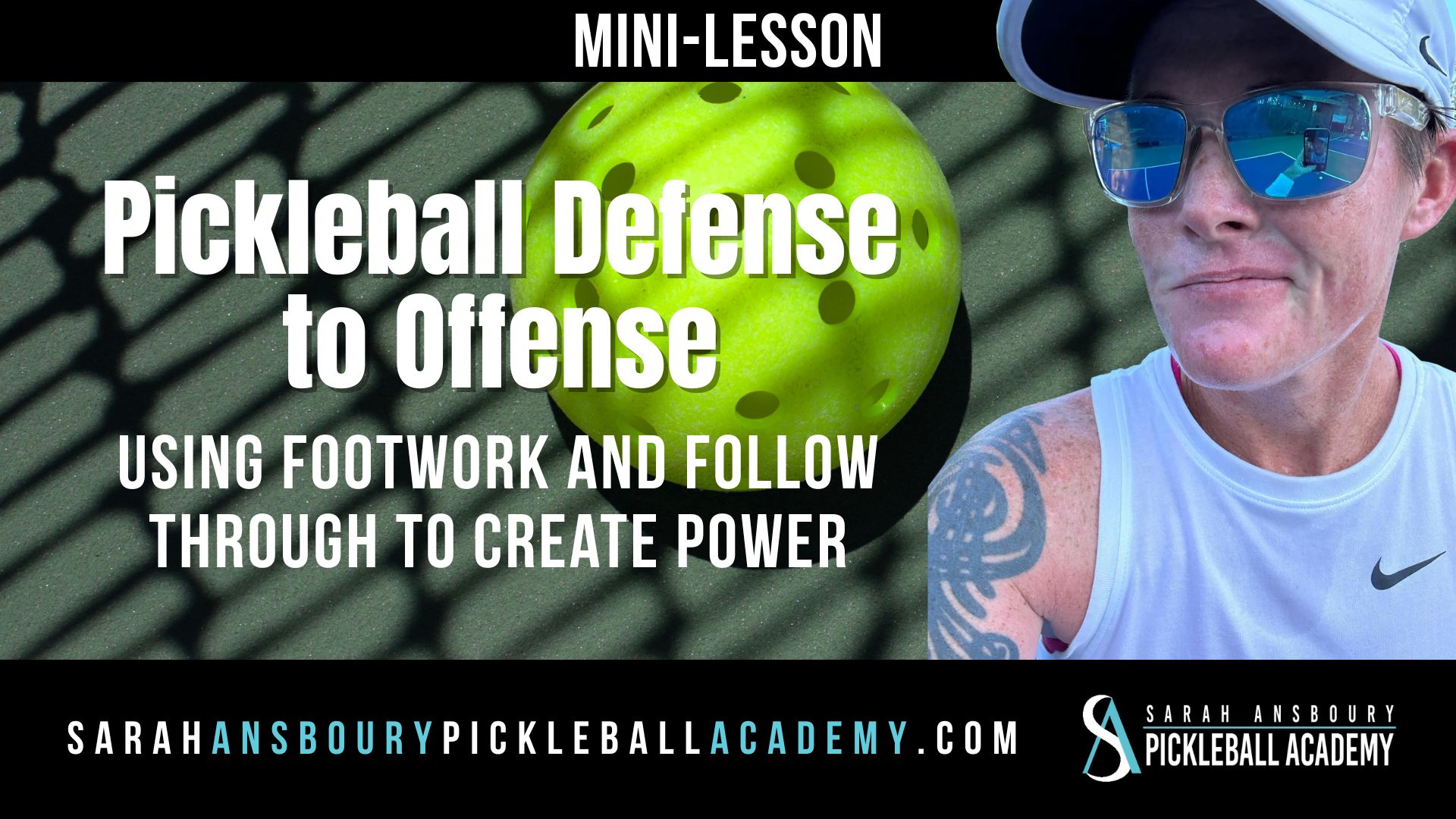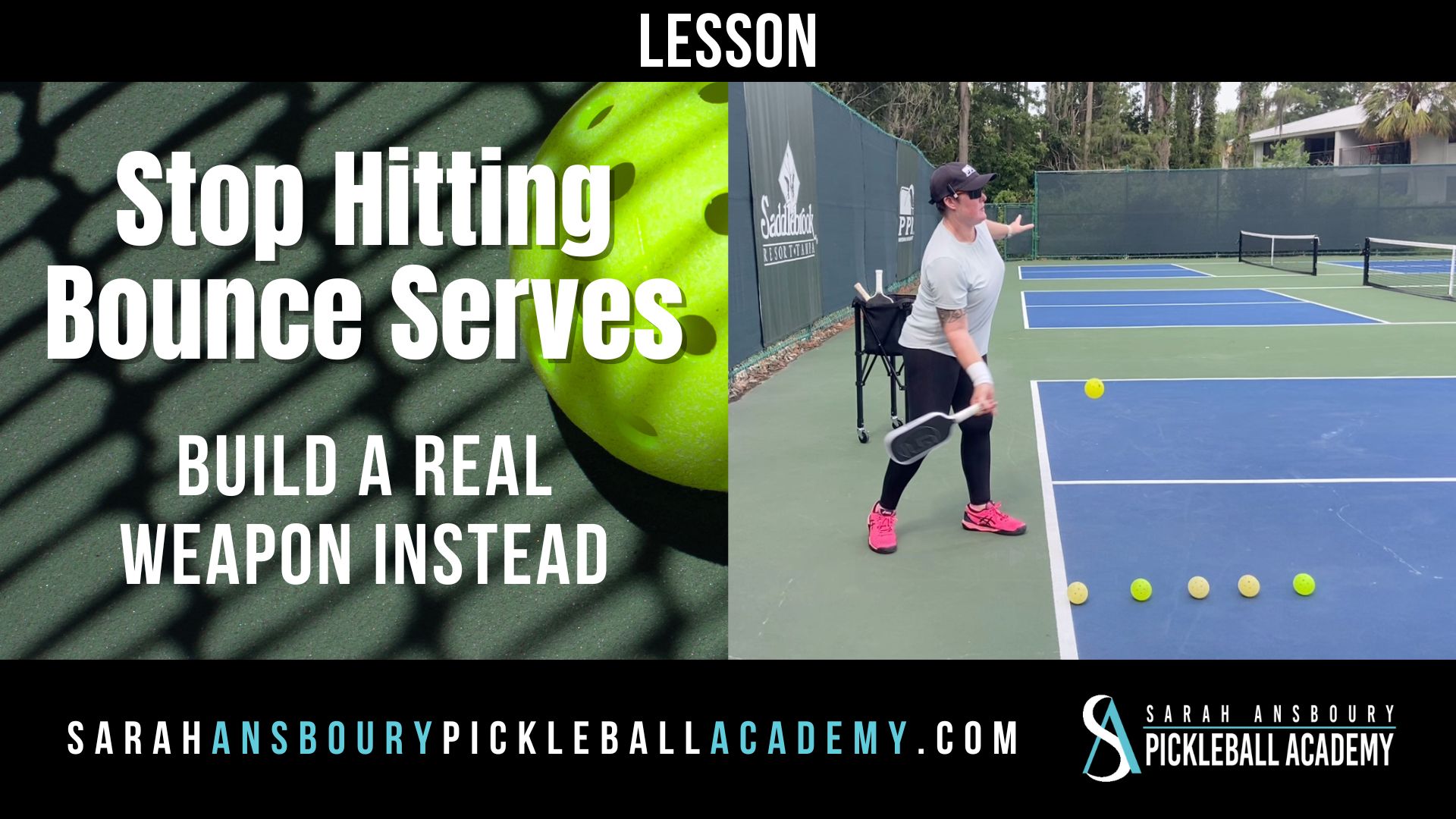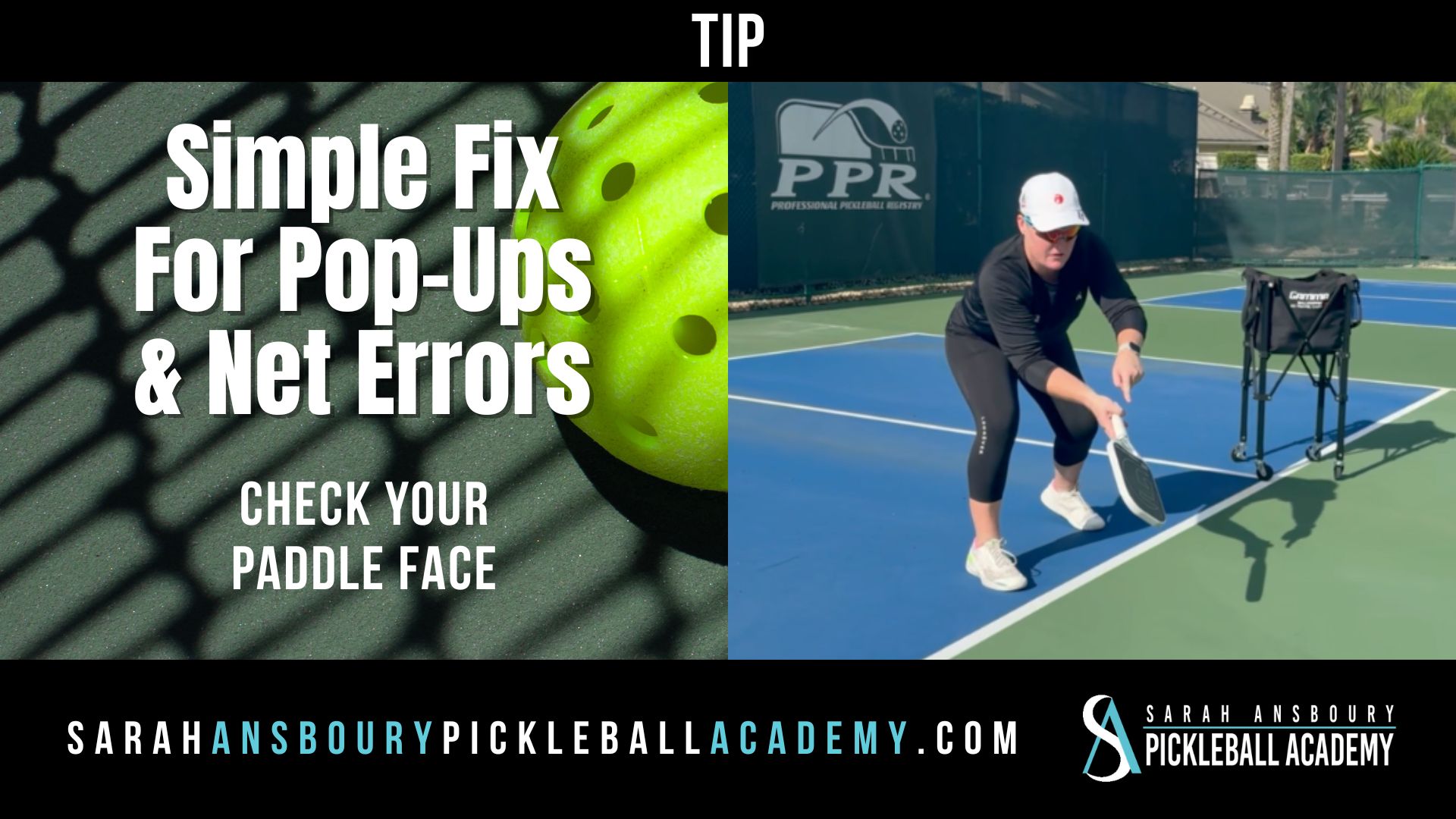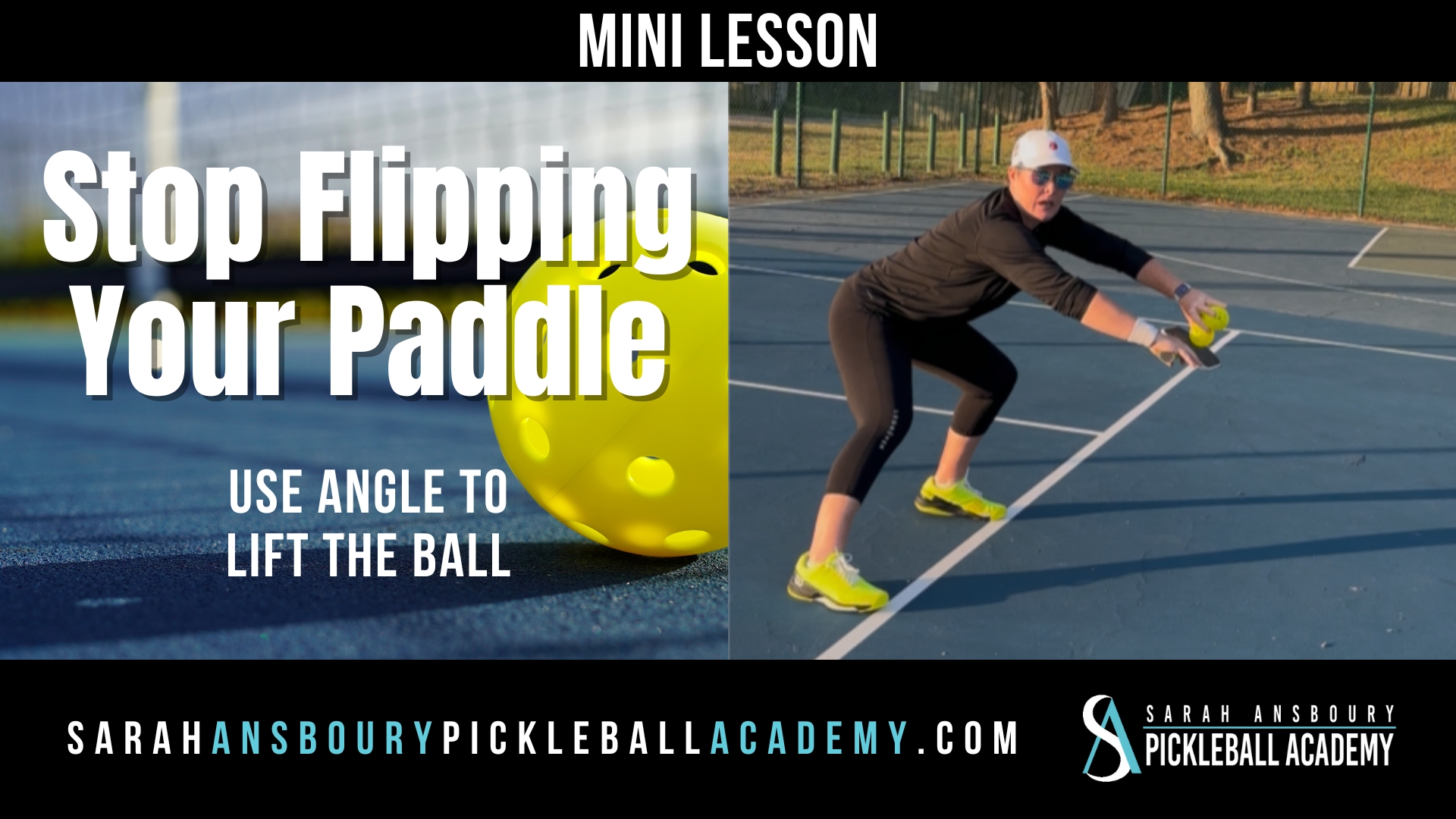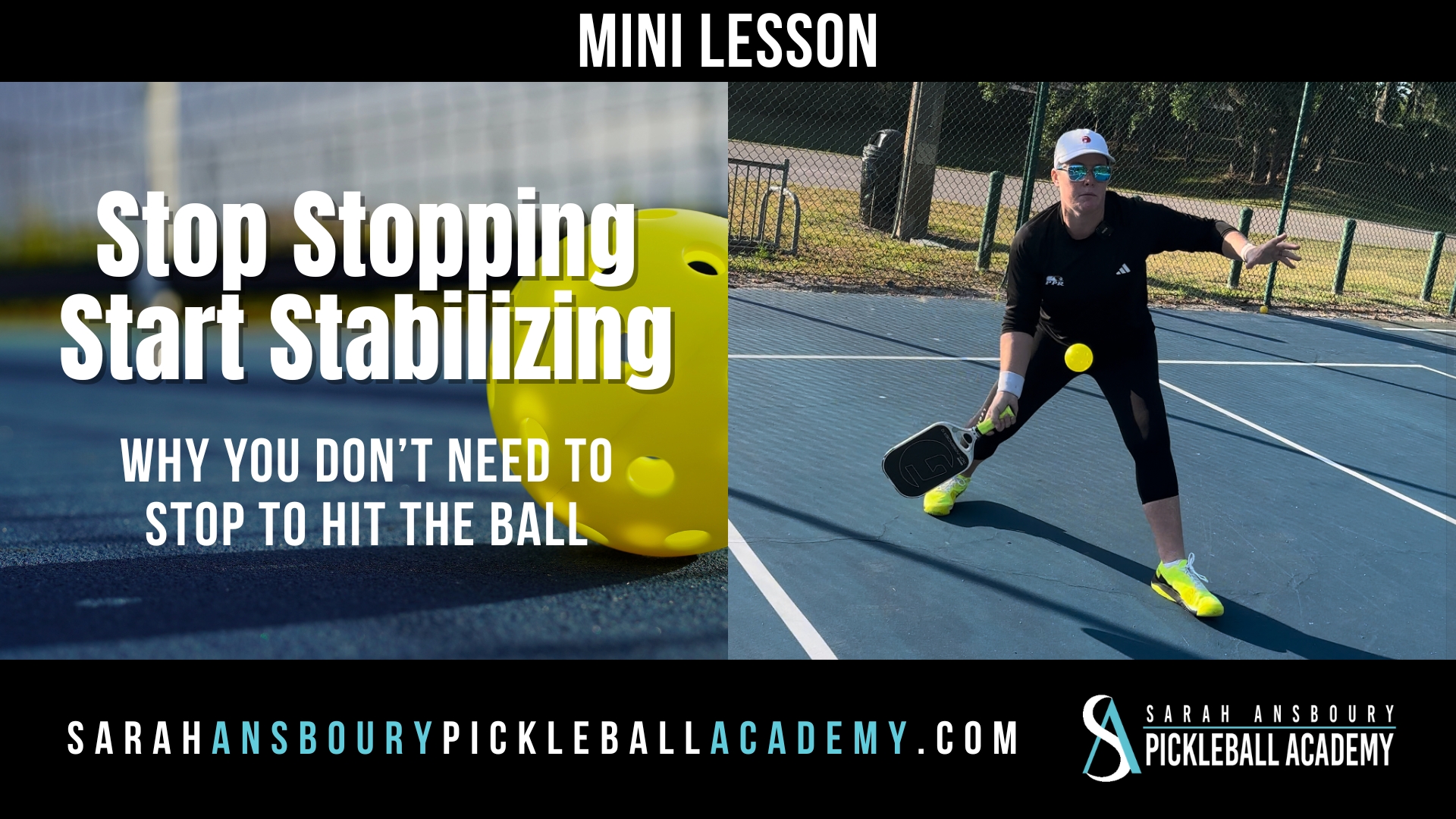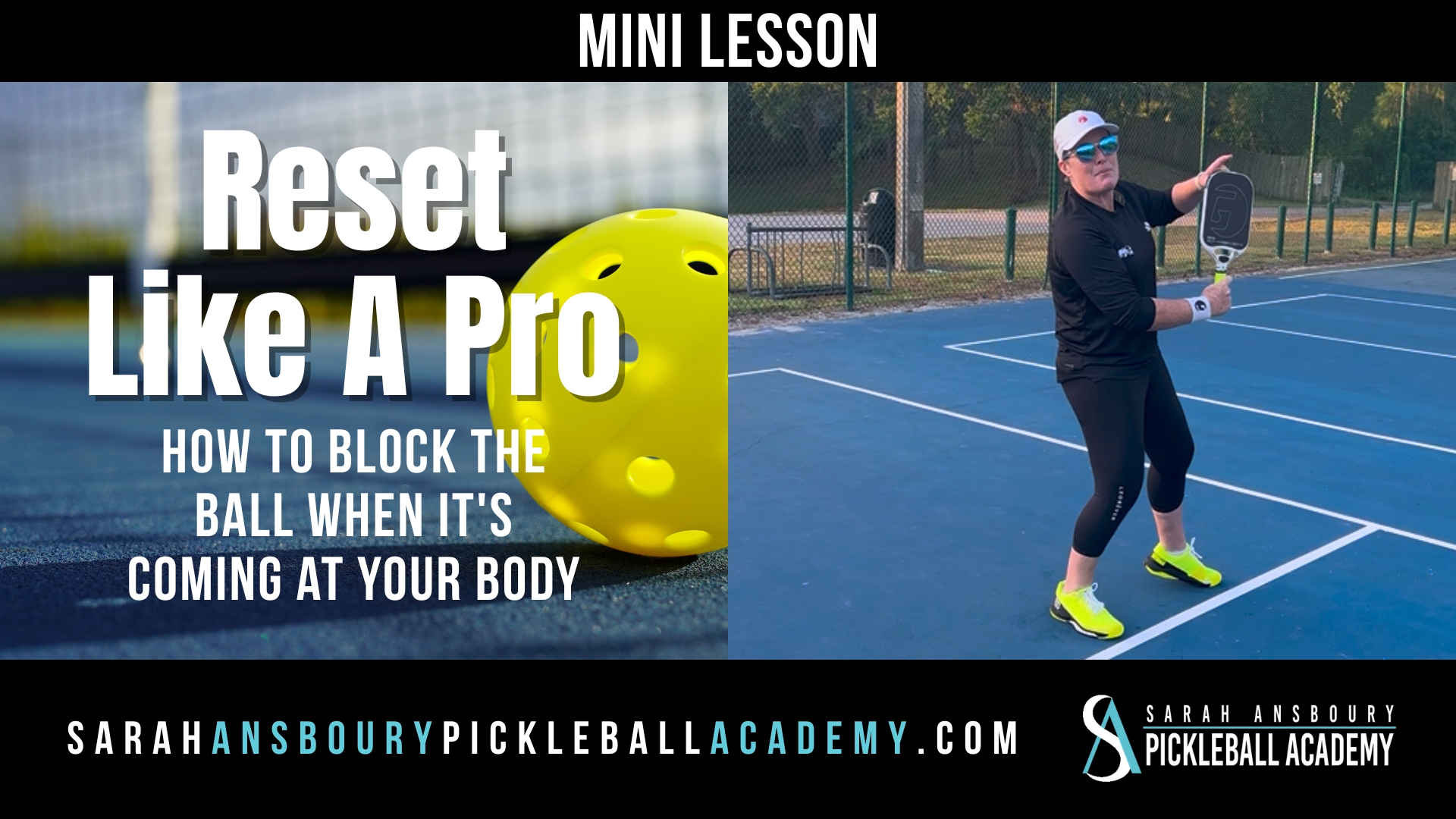I often observe people applying tennis terms or tactics to pickleball. One of these is the phrase no man’s land. But pickleball isn’t tennis! There are important differences.
What’s In The Video? Walking, Moving, Breathing, Attacking, Racing, Running, Crashing, Pausing, and Pushing (Not Necessarily In That Order)
In Pickleball The Transition Zone Is Not “No Man’s Land”
As we approach our transition we want to do so with as little impact to the body as possible.
Decelerate to Accelerate
Taking big dynamic steps that stabilize the body. Remember in this mini lesson drill our goal is not to win the point, it’s to improve our transition skills.
Keep Your Paddle In Front Of You
Keeping your paddle forward, push the ball to your target. One of the things that keeps the ball soft and slow is the speed you are moving in your transition. You will find your control improves when you move at a slower, calmer pace.
Your Transition Is Not About The Destination, It’s About The Journey On The Way

Tennis & Pickleball
I grew up playing tennis. So it was only natural that when I started playing pickleball I tried to apply what I learned to my pickleball play. Of course, there is much that can be applied. But there are important differences that took me a while to recognize. I have written about some of the differences before:
- For example, there are differences in the contact point;
- The differences in the last two steps; and
- The need to shorten your backswing.
But today, we are going to consider what in tennis we called no man’s land.
No Man’s Land vs Transition Zone
We really don’t have no man’s land in pickleball. Instead, I want you to think about the 15 feet between the baseline and the non-volley zone line as the transition zone. It is the space we move through as we transition to the net. The term no man’s land often causes people to race through it. They are so concerned that they not “get stuck” that they become oblivious to what is happening on the other side of the net or with their partner.
It’s Okay
While we want to get to the NVZ, it is totally okay to hit a ball in the transition zone. The trick is how we control our body and paddle. Most often I see people get jammed. This is caused by them dropping their paddle below their waist and/or taking a big jump step that stops their momentum and kills the ball. When moving through the transition zone I want you to:
- Focus on keeping your paddle in front of you and above your waist. I want to be able to make contact with the ball in front of me. I want to be able to easily move to either a forehand or backhand…so it is important to keep my paddle in a neutral position by engaging both of my shoulders.
- Only move as fast as you can keep your paddle in the correct position! Stay in motion, even if it is in slow motion! You don’t
 want to race toward the line, nor do you want to stop and start too much. Often if you just keep walking forward through the ball, you can easily travel through the transition zone in two shots. Remain in control. Moving in control, at a consistent rate gives you the ability to accelerate or decelerate if you need to change direction.
want to race toward the line, nor do you want to stop and start too much. Often if you just keep walking forward through the ball, you can easily travel through the transition zone in two shots. Remain in control. Moving in control, at a consistent rate gives you the ability to accelerate or decelerate if you need to change direction. - Keep in mind, the ideal contact point when you are in this area is above your knees. Catching the ball at a higher point will help you get the ball over the net without popping it up or hitting it into the net.
So next time you play…think about your movement through the transition zone. And eliminate the term no man’s land from your pickleball vocabulary. If you move forward in control and allow your weight to be led from your lower body through the ball good things will happen.

